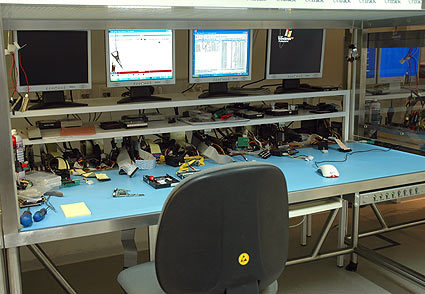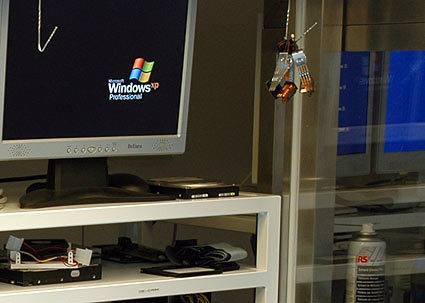RAID Recovery: The Data Knight Kroll Ontrack To The Rescue!
Priority Of Processing: A Matter Of Good Will And Hard Dollars
At the reception desk, the customer can choose between the following service options. Standard (delivered between 8 am and 11 am) costs approximately $120. Express may be delivered between 8 am and 6:30 pm, but will be charged around $250. Emergency allows you to drop off your drive 24 hours a day, but you will have to pay about $500.
These prices are for diagnostic analysis only, whereupon the customer can decide whether to accept or decline the suggested data recovery. In contrast to the smaller data recovery specialist CBL, Kroll Ontrack generally charges for its analysis. In an after-hours matter of life and death, Ontrack will refer the issue for further processing to another office (e.g. from London to Los Angeles). Ontrack has 29 offices worldwide.
In 2005, Kroll Ontrack processed 50,000 recovery cases. Ontrack was able to complete 40% of incoming orders successfully right away. The remaining 60% had to be taken to the clean room, where 75% of data recoveries were successful.
Initial Step: The Imaging Station
The first thing the specialists try is to save an image of the affected drive onto the local server at the Ontrack office. At the site we visited, Ontrack provides 60 TB of storage capacity. Ideally, specialists will work with the image only, and not with the drive itself. Kroll Ontrack extends its own storage capacities to correspond to increasing capacity drives on the hard drive market. In case of urgency, a hard drive's content will simply be copied to another hard drive instead of the server, which is a bit faster.
Second Step: Emergency Surgery
A single data recovery workstation at Ontrack consists of four systems, since data recovery can take a long time. Below on the right, you see the KVM switch (keyboard/video/monitor switch).
A hard drive that refuses to cooperate will be sent to the clean room right away. These are Kroll Ontrack workstations set up according to clean room class 100, where a maximum of 100 dust particles are allowed per cubic meter of air. Components will be swapped here: drive electronics or internal components, read/write arms including writing/reading heads; or the spindle motor. In most cases, the specialist is able to access the drive's data again.
The data recovery specialist has frequently-used write/read heads always at hand (hanging in the top right corner).
Get Tom's Hardware's best news and in-depth reviews, straight to your inbox.
Third Step: Data Recovery
Ontrack sends a list of saved data to the customer if it was able to access hard drive data successfully. The customer then can decide which files are important and which are not - the cost for data recovery is estimated according to your selection. Be prepared to invest at least $1,000. RAID systems can reach the five-digit zone rather quickly, since the effort is measured according to the amount of data and grade of destruction. Working on numerous hard drives simply takes a long time.
The Ontrack program Verifile offers an overview of data that can be restored (Use Ontrack VeriFile Online Data Reports). Since this program works with an Active X control element, you have to use Microsoft's Internet Explorer. The tool issues an ODR-file (Online Data Report), color-coding data as follows: green - good, yellow - restorable, red - only partly recoverable or not recoverable at all.
Today, the customer usually receives the desired data on a memory stick or DVDs.
Current page: Priority Of Processing: A Matter Of Good Will And Hard Dollars
Prev Page Troubleshooting Next Page Increasing The Level Of Difficulty: RAID Recovery
Patrick Schmid was the editor-in-chief for Tom's Hardware from 2005 to 2006. He wrote numerous articles on a wide range of hardware topics, including storage, CPUs, and system builds.
-
We strongly suggest you not use any data recovery software on your own unless you are a professionalReply
Instead, use a reliable RAID recovery company to extract the data for you
RetroData offer a money back guarantee!

